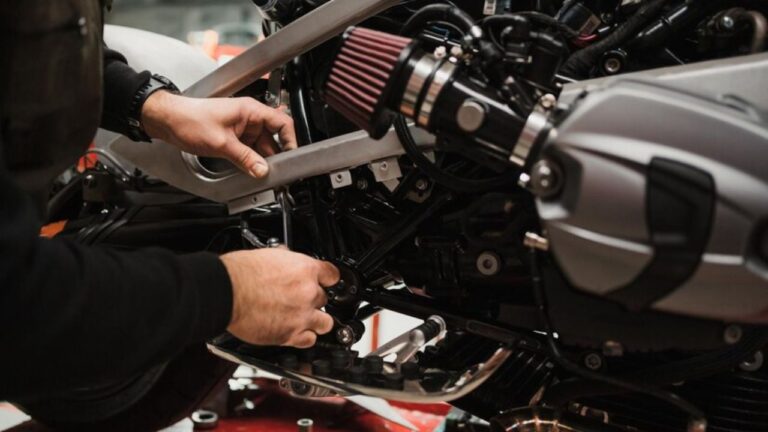Owning a VStar 1600 means you’re in possession of a powerful and reliable machine. Yet, even the best motorcycles require a bit of hands-on attention from time to time. Knowing how to turn the engine manually on your VStar 1600 can save you from unexpected troubles and provide a deeper understanding of your bike’s mechanics.
Whether you’re performing maintenance, diagnosing an issue, or simply exploring the inner workings of your motorcycle, this guide is tailored to you. We’ll walk you through each step with clear instructions, helpful tips, and essential safety precautions.
Why Manual Engine Turning is Important
Understanding how to manually turn your VStar 1600’s engine is not just a skill; it’s a necessity for any dedicated rider. This knowledge can help you perform routine checks, ensure your engine is functioning correctly, and diagnose potential issues before they escalate.
Routine Maintenance
Routine maintenance is crucial for keeping your bike in top condition. By manually turning the engine, you can check for unusual noises, ensure smooth operation, and spot any wear and tear that might need attention.
Diagnostic Checks
When something feels off with your ride, manually turning the engine allows you to inspect various components. Identifying issues early can prevent more significant problems and costly repairs down the line.
Enhancing Mechanical Knowledge
For those who love to understand the inner workings of their ride, manual engine turning offers a hands-on approach to learning. It provides insight into how different parts of the engine interact and function together.
Essential Tools and Preparation
Before you start, gather all necessary tools and ensure you’re prepared for the task at hand. Proper preparation ensures a smooth and safe process.
Required Tools
To turn the engine manually on your VStar 1600, you’ll need:
- A socket wrench set
- A breaker bar or ratchet handle
- An extension bar
- A crankshaft bolt adapter
Having these tools ready will make the process more efficient and straightforward.
Safety Precautions
Safety should always be your top priority. Wear protective gloves, ensure your bike is securely placed on a stable surface, and disconnect the battery to avoid any accidental starts.
Workspace Setup
Choose a clean, well-lit area to work in. Ensure you have enough space to move around and place your tools within easy reach. A tidy workspace helps you stay organized and focused.
Locating the Crankshaft Bolt
The crankshaft bolt is pivotal for manually turning the engine. Knowing its location and how to access it simplifies the process.
Finding the Crankshaft Bolt
On the VStar 1600, the crankshaft bolt is typically located on the right side of the engine, near the bottom. Refer to your bike’s manual for precise location details and diagrams.
Accessing the Bolt
Remove any obstructions that might hinder your access to the crankshaft bolt. This may include parts of the fairing or other components. Keep track of all removed parts for reassembly.
Ensuring Proper Fit
Ensure your socket wrench and crankshaft bolt adapter fit snugly onto the bolt. A secure fit prevents slippage and potential damage to the bolt or surrounding components.
Steps to Manually Turn the Engine
With everything set, you can now proceed to manually turn your VStar 1600’s engine. Follow these steps carefully for optimal results.
Step-by-Step Guide
- Attach the socket wrench with the crankshaft bolt adapter to the crankshaft bolt.
- Use the breaker bar or ratchet handle to apply steady pressure.
- Turn the crankshaft bolt clockwise to rotate the engine.
Applying Steady Pressure
Maintain consistent pressure while turning the crankshaft bolt. Avoid sudden movements or excessive force, as this can cause damage or lead to inaccurate diagnostics.
Listening for Irregularities
As you turn the engine, listen for any unusual sounds. Clicking, grinding, or other noises may indicate underlying issues that need addressing.
Checking Engine Components
While manually turning the engine, take the opportunity to check various components. This proactive approach can help maintain your bike’s performance.
Inspecting Belts and Chains
Check the condition of belts and chains for signs of wear or damage. Replace any components that show excessive wear to prevent potential failures.
Examining Pulleys and Gears
Ensure pulleys and gears are functioning smoothly. Look for any misalignment or damage that could affect the engine’s performance.
Assessing Overall Condition
Take note of the overall condition of the engine and surrounding components. Clean any dirt or debris that might hinder operation and address any visible issues.
When to Seek Professional Help
While manual engine turning is a valuable skill, there are times when professional assistance is necessary. Knowing when to seek help ensures your bike remains in top condition.
Recognizing Complex Issues
If you encounter complex issues or are unsure about the condition of certain components, it’s best to consult a professional mechanic. Their expertise can prevent further damage and ensure accurate repairs.
Regular Professional Inspections
Regular inspections by a certified mechanic complement your maintenance efforts. They can identify issues you might miss and provide expert advice on keeping your bike in optimal condition.
Combining DIY and Professional Care
A balanced approach of DIY maintenance and professional care offers the best results. Your hands-on efforts, combined with expert insights, ensure your VStar 1600 runs smoothly and efficiently.
Conclusion
How to turn engine manually on a vstar 1600 is an essential skill that offers numerous benefits. From routine maintenance to advanced diagnostics, this hands-on approach empowers you to keep your bike in peak condition. Equip yourself with the right tools, follow the steps outlined in this guide, and never hesitate to seek professional help when needed. Your VStar 1600 deserves the best care, and with this guide, you’re well on your way to providing it. Happy riding
